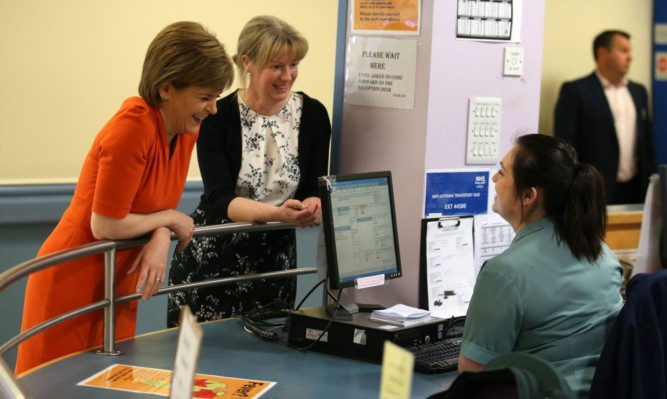Health Secretary Shona Robison has told hospital chiefs they must continue to make improvements towards meeting accident and emergency (A&E) target times.
With the Scottish Government allocating almost £9 million to NHS boards, Ms Robison said they must “sustain the improvement seen since the winter” and make further progress to achieving the “world-leading” A&E waiting-times targets.
Hospitals have been given a list of “six essential actions” they must take to help improve emergency care – including operating a seven-day service, which should increase the number of patients who can be discharged at weekends.
The funding – which amounts to £8,990,162 – is being allocated to health boards across the country in 2015-16 as part of the Scottish Government’s £50 million action plan to improve emergency care.
A&E waiting-times targets have not been met for more than five years, according to Labour.
The Scottish Government has set the goal of having 98% people who attend A&E being treated within four hours, with an interim target of 95% ahead of this.
But hospitals struggled to cope over winter, with more than 3,200 people having to wait more than eight hours in A&E in January.
Ms Robison insisted that improving A&E performance could not be done in isolation, with action needed across the health and social care sector.
As well as the funding for its A&E action plan, the Government is providing £100 million to help tackle the problem of bed-blocking, where patients have to stay in hospital when they are clinically well enough to leave while they wait for care to be arranged.
The Health Secretary said: “The Scottish Government is committed to sustainably improving A&E performance, which is why we are working with health boards, the Royal Colleges and councils to roll out essential actions which will ensure best practice across the country.
“Last winter was challenging for our health boards despite the planning that went in to preparing for what is always a period of significant pressure.
“That is why all boards will be reviewing and refreshing their plans ahead of next winter and to ensure A&E performance improves across all 12 months of the year.”
She continued: “Addressing A&E performance cannot be seen in isolation, which is why we must look at the whole system, and these actions depend on a number of partners across the health and social care system working together.
“As part of this, we have appointed national improvement officers who will liaise directly with the locally-appointed teams to provide a co-ordinated, flexible and combined performance and improvement support.
“We are also allocating £9 million from the £50 million Unscheduled Care Fund to assist with implementing these new measures as well as enhancing work already under way.
“It is also why one of this Government’s top priorities has been to tackle delayed discharge through investing £100 million to help get people home from hospital as quickly as clinically possible. This is good for the patient and in turn frees up beds, easing pressure on A&E.”
Ms Robison said improvements were being made, with the most recent figures showing 93.5% of patients in A&E treated in the target time
“This is the best performance since weekly reporting began in February,” she said.
“Of course, weekly performance is likely to fluctuate and it is now crucial that, with ongoing support from the Scottish Government, health boards sustain the improvement seen since the winter and move towards the world-leading targets we have in place.
“There is still progress that must be made to further reduce waiting times, improve patient flow and meet our world-leading targets, and these essential actions will help health boards focus on achieving this.”
Professor Scott McLean, director of acute services at NHS Fife, welcomed the new approach, saying the health board had “already adopted some of the very sensible actions that are crucial to improving performance, and therefore quality of care to patients”.
